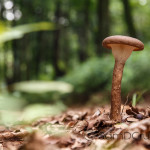In an ideal world to get great aerial photos, as a photographer we would command our own private plane or helicopter with removable doors, enabling the best angles, light and location to get the best birdseye shots. However in the real world for most of us this is not possible…
We do, however get the chance to take the odd flight for holiday’s or business trips.
While it is always better to have the least amount of glass between your lens and your subject, some results can still be decent. In this guide I will go into various aspects of taking photographs from behind the glass window of a commercial aircraft. Things to remember and tips to get the best shots from the limited environment of the cramped economy seat.
Buying The Ticket
The takeoff time is something to really consider first. There is no point in flying into Nepal in the dark where the landscape will be plain black. Whereas, for example, flying into London City Airport could result in some nice night shots (be aware though : for night shots, you will need a very fast lens and a camera that can control noise well at high ISO)
 I would recommend 2 hours after sunrise or 2 hours before sunset (this enables good shots on takeoff – make sure you check the landing time as well). This is a general rule, if you specifically only want sunset / sunrise shots adjust the time accordingly.
I would recommend 2 hours after sunrise or 2 hours before sunset (this enables good shots on takeoff – make sure you check the landing time as well). This is a general rule, if you specifically only want sunset / sunrise shots adjust the time accordingly.
Lenses
So, you have booked your ticket. What lens(es) should you take?
 There is not much space at the seat to carry your whole arsenal of lenses and also not alot of time to change lenses once you get the optimum scene in front of you as you fly past it.
There is not much space at the seat to carry your whole arsenal of lenses and also not alot of time to change lenses once you get the optimum scene in front of you as you fly past it.
A very wide angle lenses is of little use, the small window frame often gets in the shot and the landscape is far away.
The ideal lens, is anything from 40mm upwards (on a full frame camera). Ideally with a relatively wide aperture (helpful on cloudy or low light situations). I would recommend either 50mm or 85mm or 70-200.
Filters – Take them all off. A polarizer can often work great for landscapes – but it does not work through plane windows. UV filters lower image quality and should be avoided at all times.
Lens hood – remove it… this will allow you get closer to the window.
At The Airport – Check In
 This could be the most important step of all. You need to make sure you are in the best seat to get the shot you are looking for. There are a few things to consider :
This could be the most important step of all. You need to make sure you are in the best seat to get the shot you are looking for. There are a few things to consider :
1. Window seat!… ok, obvious but still must be mentioned
2. Which direction the plane will fly and where the airport is in relation to your ideal subject. Make sure you check the map and know your stuff.
For example a flight from Barcelona to London Heathrow will approach from a south eastern direction. Heathrow airport lies to the south west of London centre, so to get shots of London city you would want to be sitting on the right side of that plane. (Of course this is not fail safe, sometimes the plane will approach a different way due to air traffic or even circle and double back, but give yourself the best chance by getting clued up before hand)
3. The wings! Do you want to sit near the wing to get photos of the landscape / clouds / sunset with part of the wing in it? – if so you want to sit in the middle part, depending on various sizes of plane this could be between row 10 to row 20. OR – do you want uninterrupted landscape shots? – if so try and get row 1-6 or row 26+
Most flight companies will let you choose your seat (sometimes even the budget ones where seat is pre-set if you ask them very nicely)
On The Plane
 Sounds obvious again but – make sure you take your camera out and keep under seat in front of you.
Sounds obvious again but – make sure you take your camera out and keep under seat in front of you.
Hopefully your window is not too scratched or dirty. Give it a bit of a clean with your sweater.
Camera Settings
You have made it this far… you have the perfect seat, your gear is all ready to go and the sun is shining!
 Now comes a bit of luck with which way the plane turns, swoops, leans etc. If you are lucky your landscape is right there waiting for you and the plane will lean over to one side right into it.
Now comes a bit of luck with which way the plane turns, swoops, leans etc. If you are lucky your landscape is right there waiting for you and the plane will lean over to one side right into it.
Shutter Speed : you will want to make sure your shutter speed is at least 1/500 sec. This is important since the plane / landscape is moving and there are all kinds of vibrations to make your hand unsteady.
Aperture : this can depend on how filthy and scratched your window is. Ideally you want to use as high an aperture as possible F8.0 +. However if you are shooting very high such as F16 and the window is very marked, it is possible these marks are picked up in your photo. In this case go lower. Anyhow the aperture settings is rather dependent on what shutter speed you are generating. Use whatever aperture is need to maintain the 1/500 sec as mentioned above.
 ISO : as always you want to use as low an ISO as possible to ensure the least amount of noise and highest quality. However, adjust your ISO in balance with your aperture most importantly to achieve a minimum shutter speed of 1/500 sec as mentioned above.
ISO : as always you want to use as low an ISO as possible to ensure the least amount of noise and highest quality. However, adjust your ISO in balance with your aperture most importantly to achieve a minimum shutter speed of 1/500 sec as mentioned above.
White Balance : the plane windows / clouds / hazy atmosphere … whatever it is… if you leave your white balance on auto your pics will come out slightly blue. The best white balance to use is usually “shady” or “cloudy”- adjust with trial and error.
Shooting Tips
1. Make sure you get as close to the window as possible, this will minimize the reflections, you can even use your hand to one side of the lens just out of shot to shield reflections if they are visible.
2. Make sure not to have your lens touching the window (vibrations of the plane will blur you photos).
3. Shoot through the middle part of the window (less reflections than at the edges and the glass is also flatter causing less distortion)
4. Shoot straight – if you have already passed your subject and you are trying to shoot backwards at an angle or trying to shoot downwards at a steep angle, the image is likely to be blurry. The glass tends to give alot more distortion when shot through at an angle.
Go Trigger Happy!
 You have carefully prepared yourself and your gear, now shoot away, enjoy and capture your aerial beauties.
You have carefully prepared yourself and your gear, now shoot away, enjoy and capture your aerial beauties.
If you found this guide at all of any use or even found it totally useless, I would love to hear so leave comments below.
Share your photos
I would and I’m sure other’s would like to see your work. Please send jpg versions of your images to info@samdcruzphotography.com and I would be happy to publish them at the bottom of this post below



Leave a Reply